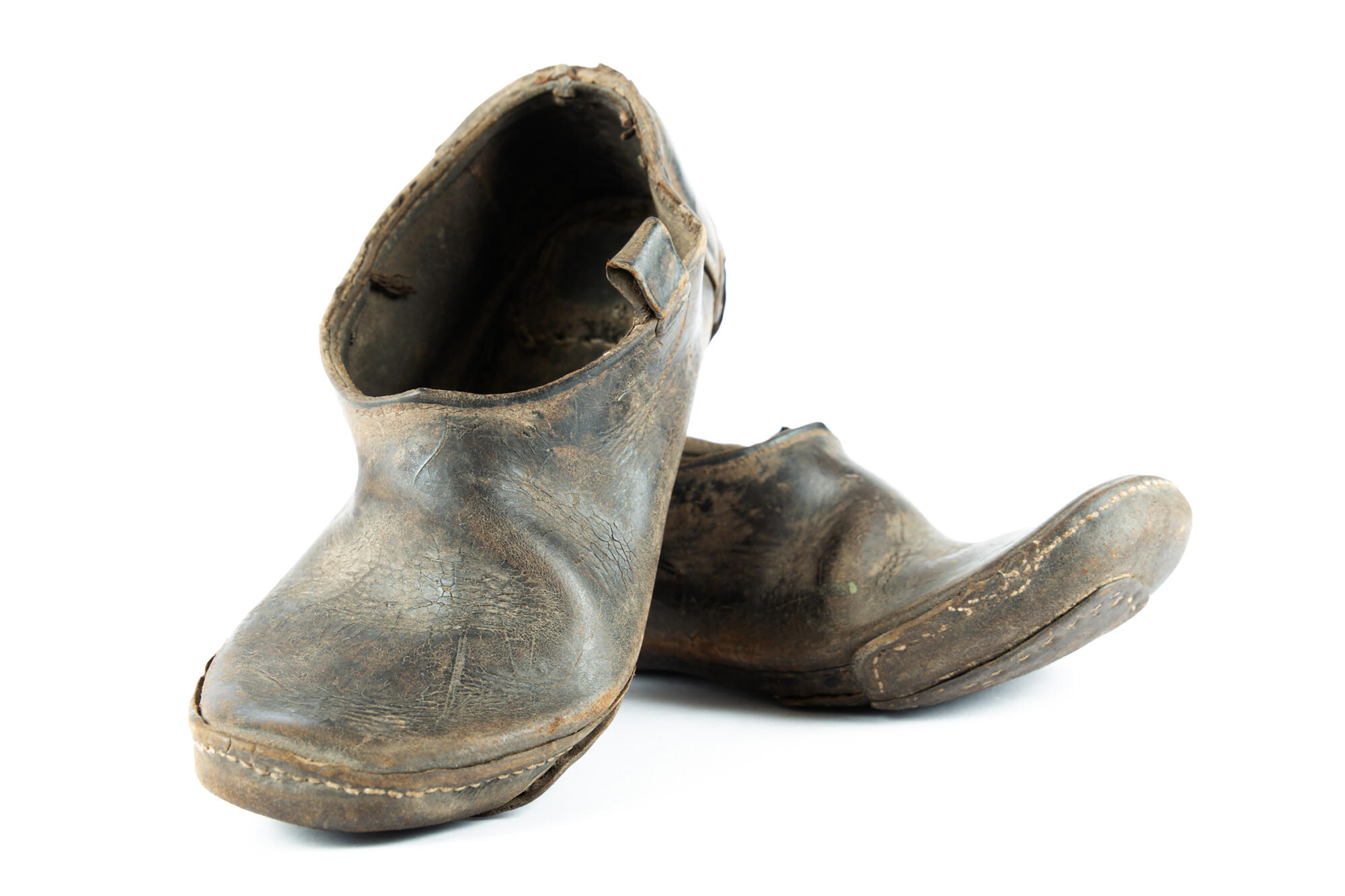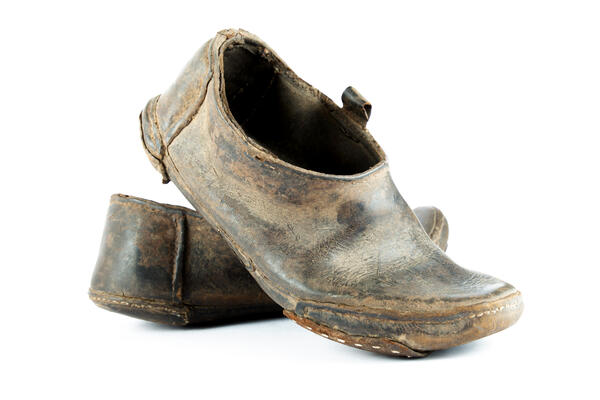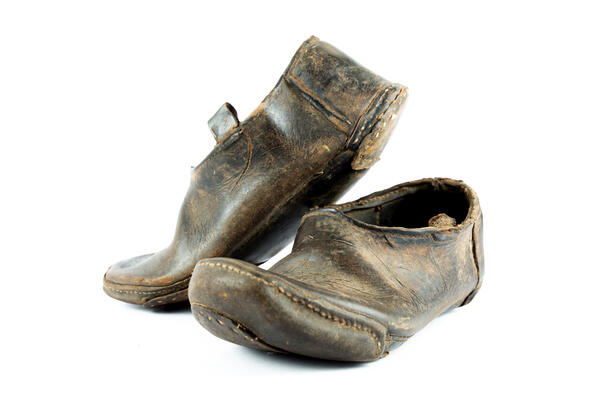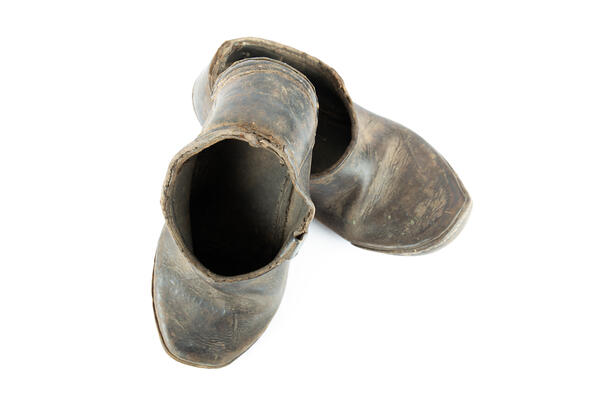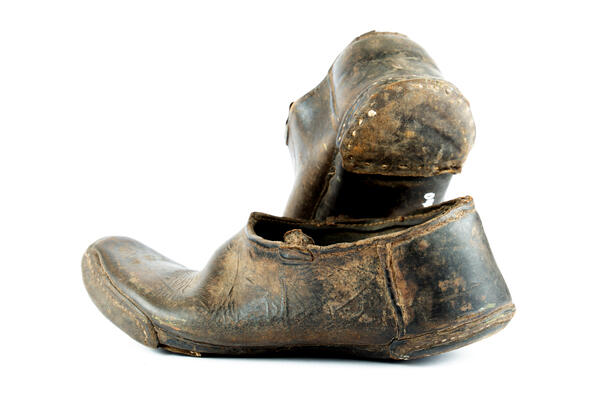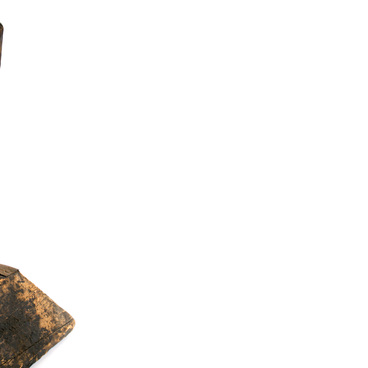Unlike the rest of Russia, people of the Siberian regions did not wear bast shoes. The main material for making shoes here was leather. It was used to make a variety of shoes: boots, “stupni”, “koty”, “porshni”, “brodni”. Among them, the chirki boots were one of the most popular. In these soft and light shoes, the person’s feet did not get tired, or get blisters, and furthermore, wearing chirki shoes helped avoid rheumatism.
Chirki were made on a straight last (in other words, the two shoes were the same for the right and left legs) from cowhide leather. First of all one needed to clean the inner side of the hide skin and remove wool residue from the leather, then process the leather so that the fibers became more loose. To do this, the skin was soaked in special substances or frozen and covered with vegetable oil, then dried. The skin prepared in such a way was roughed up manually, by trampling or using tools depending on the density of the raw material. The leather was then held over smoke, so that it did not harden over time.
After the upper and lower parts were sewn together, the products were turned seams inside out and trimmed along the edge. Flat loops were sewn into seams. Through these loops a leather cord was pulled and tied around the leg.
Chirki with bootlegs sewn on top turned into brodni boots, suitable for wearing on rainy or snowy days. The wide and long, knee-high boot was cut out of leather, tarpaulin, or canvas (simple and cheap) and secured with straps around the ankles and above the calves. Fur or woolen knitted stockings as well as footwraps could be worn under the brodni boot. Sometimes, going fishing, the peasants simply insulated the sole with hay.
To prevent the shoes from losing shape, they were stretched with pads and soaked with tar during storage. The tar smell soon wore off, and the skin was better preserved.
Chirki near Uvat could be found in almost any village in the second half of the 20th century. Even now, this ancient shoe has been preserved in some of the old villages in the old villages of the Uvat district.
